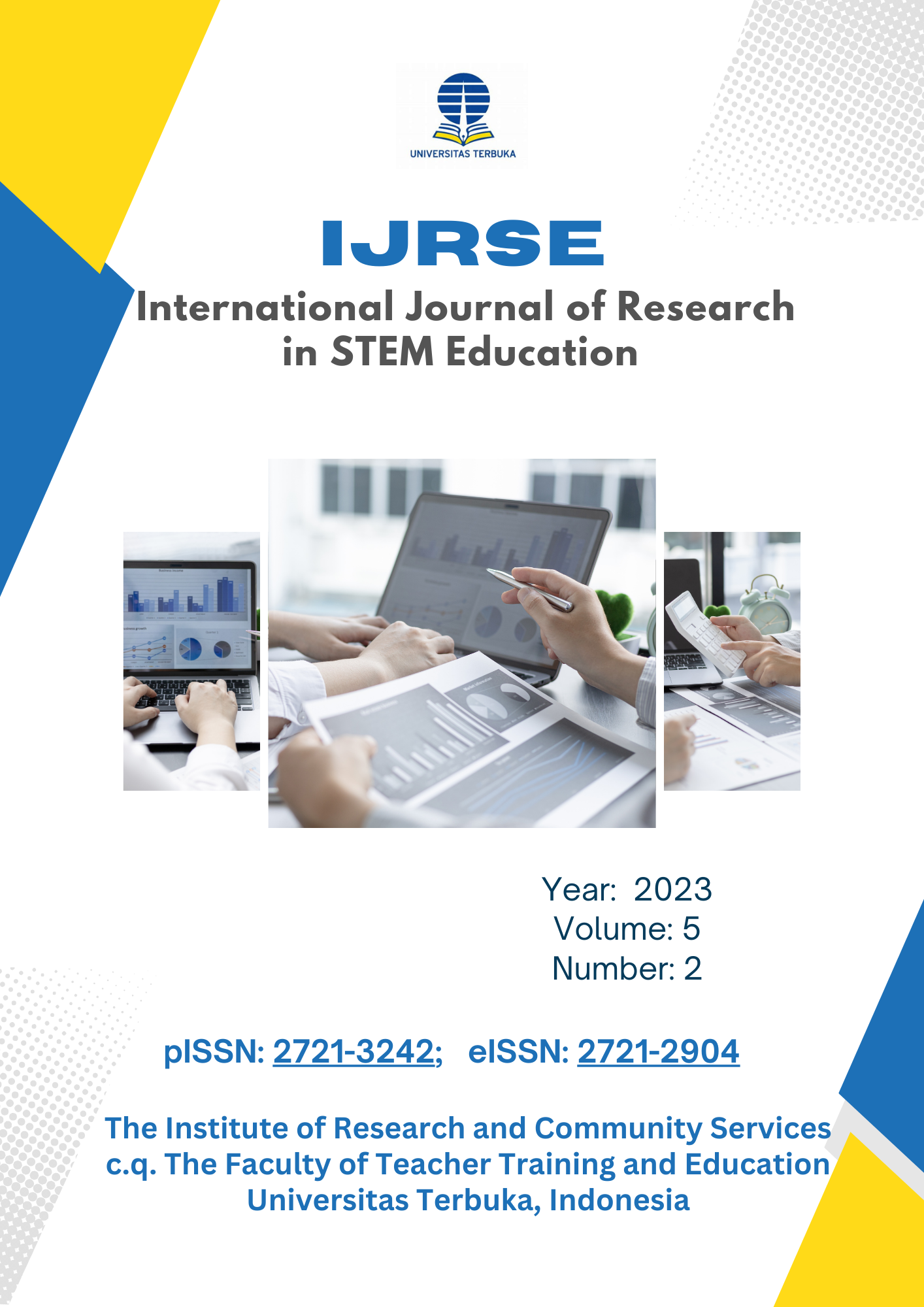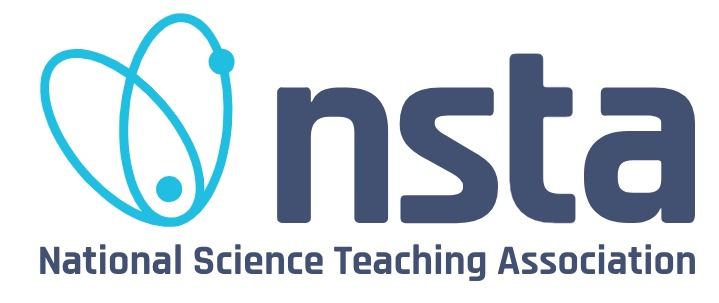Universalizing science literacy: How to transcend deficit models of teaching and learning
DOI:
https://doi.org/10.33830/ijrse.v5i2.1224Keywords:
Disciplinary literacy, Universal design, Deficit model of teaching and learning, Abundance model of teaching and learning, STEM education, Student success, Disability Studies, Enabling universityAbstract
Student attrition figures are a hidden metric in universities. They signify institutional failure, inhibit branding and marketing campaigns, and displace blame onto individual students. Behind the thousands of cases of attrition are individual stories of shame, guilt, failure, confusion, and lost future hopes and aspirations. This article explores how students' in and through their diversity - can be supported to succeed. Critiquing the deficit model of teaching and learning and deploying both universal design and the abundance model of teaching and learning, this article provides new strategies for student success. We offer innovative methodologies to understand and enable productive pathways by students through a curriculum. The goal is to enhance and enliven science education and demonstrate the gift and power of well-qualified university academics aligning innovative research and teaching.
References
Alber, T. (2013). Tools for teaching: ditching the deficit model. Edutopia, Retreved at April 2, 2023: https://www.edutopia.org/blog/teaching-tool-ditching-deficit-model-rebecca-alber
Aronowitz, S. (2000). The Knowledge Factory: Dismantling the Corporate University and Creating True Higher Learning. Boston: Beacon Press. https://eric.ed.gov/?id=ED448622
Barnes, D. (2007). Disability, higher education and the inclusive society. British Journal of Sociology of Education. 28.1: 135-145. https://www.jstor.org/stable/30036189
Bath, D., Smith, C., Stein, S., & Swann, R. (2004). Beyond mapping and embedding graduate attributes: bringing together quality assurance and action learning to create a validated and living curriculum. Higher Education Research & Development, 23(3), 313-328. https://doi.org/10.1080/0729436042000235427
Ben-Moshe, L., Cory, R., Feldbaum, M. and Sagendorf, K. (2005) Building pedagogical curb cuts: Incorporating disability into the university classroom and curriculum. Syracuse: Syracuse University Graduate School. https://sl.ut.ac.id/EROb7QYln7
Betts, M. and Rosemann, M. (2023). The New Learning Economy: Thriving beyond higher education. London. Routledge. https://sl.ut.ac.id/wZq6LMMnZH
Bheekie, A., & van Huyssteen, M. (2015). Be mindful of your discomfort: An approach to contextualized learning. The International Journal of Research on Service-Learning and Community Engagement, 3(1). https://sl.ut.ac.id/fDLF2fOyjT
Brabazon, T. (2002). Digital hemlock: Internet education and the poisoning of teaching. UNSW Press. https://sl.ut.ac.id/cEW3kU30Xo
Brabazon, T. (2008). The University of Google: Education in the (post) information age. Ashgate. https://doi.org/10.4324/9781315551838
Brabazon, T. (2015). Enabling university: Impairment, (dis) ability and social justice in higher education. Springer. https://doi.org/10.1007/978-3-319-12802-3
Brabazon, T. (2016). Don't fear the reaper? The Zombie University and eating braaaains. KOME: An International Journal of Pure Communication Inquiry, 4(2), 1-16. https://doi.org/10.17646/KOME.2016.21
Brabazon, T. (2021). The front stage of leadership? Vice chancellor profiles and the performance of self. International Journal of Social Sciences & Education Studies, 8(4), 36-65. https://doi.org/10.23918/ijsses.v8i4p36
Brown, B. (2016). Brené Brown encourages educators to normalize the discomfort of learning and reframe failure as learning. About Campus, 20(6), 3-7. https://doi.org/10.1002/abc.21224
Burge, M. (2022) Former University of New England vice-chancellor pleads not guilty to assault charge. Guardian. September 26. https://sl.ut.ac.id/CODyIH9zZj
Chandler, D. and Reid, J. (2016). The neoliberal subject: resilience, adaptation and vulnerability. London: Rowman and Littlefield. https://www.jstor.org/stable/45014439
Collins, J. (1998). Language and class in minority education. Anthropology and Education Quarterly, 19(4): 299-326. https://www.jstor.org/stable/3195895
Convention on the Rights of Persons with Disabilities. (2006). United Nations. http://www.un.org/disabilities/convention/conventionfull.shtml
De la Harpe, B., & David, C. (2012). Major influences on the teaching and assessment of graduate attributes. Higher Education Research & Development, 31(4), 493-510. https://doi.org/10.1080/07294360.2011.629361
Douse, M., & Uys, P. (2018). Educational Planning in the Age of Digitisation. Educational Planning, 25(2), 7-23. http://isep.info/wp-content/uploads/2018/06/25.2.1.Ageof-Digitisation.pdf
Dudley-Marling, C. (2007). Return of the deficit. Journal of Educational Controversy, 2(1): https://cedar.wwu.edu/cgi/viewcontent.cgi?referer=https://www.google.com.au/&httpsredir=1&article=1028&context=jec,
Efklides, A. (2006). Metacognition and affect: What can metacognitive experiences tell us about the learning process? Educational Research Review, 1(1), 3-14. https://doi.org/10.1016/j.edurev.2005.11.001
Fatunde, T. (2015). Controversy over criteria to appoint Vice Chancellors. University World News. https://www.universityworldnews.com/post.php?story=20151005162717965
Ferns, S. (2012, 29 October - 2 November). Graduate Employability: Teaching Staff, employer and graduate perceptions Australian Collaborative Education Network National Conference, Deakin University, Geelong. https://sl.ut.ac.id/pkanZCMN1y
García-Peñalvo, F. J., García-Holgado, A., Dominguez, A., & Pascual, J. (2022). Women in STEM in Higher Education: Good Practices of Attraction, Access and Retention in Higher Education. Springer. https://orcid.org/0000-0002-8667-4000
Gorski, P. (2009). What we're teaching teachers: an analysis of multicultural teacher education coursework syllabi. Teaching and Teacher Education, 25(2): 309-318. https://doi.org/10.1016/j.tate.2008.07.008
Gorski, P. (2010). Unlearning deficit ideology and the scornful gaze: thoughts on authenticating the class discourse in education, Education Change: http://www.edchange.org/publications/deficit-ideology-scornful-gaze.pdf
Graham, S. (2000). Should the natural learning approach replace spelling instruction? Journal of Educational Psychology, 92(2), 235. https://psycnet.apa.org/doi/10.1037/0022-0663.92.2.235
Graham, S., & Hebert, M. (2011). Writing to read: A meta-analysis of the impact of writing and writing instruction on reading. Harvard educational review, 81(4), 710-744. https://doi.org/10.17763/haer.81.4.t2k0m13756113566
Greece, J. A., Dejong, W., Gorenstein Schonfeld, J., Sun, M., & McGrath, D. (2019). Practice-Based Teaching and Public Health Training: Bringing Real-World Projects to the Classroom to Teach Intervention Planning and Communication Strategies. Pedagogy in Health Promotion, 5(1), 55-61. https://doi.org/10.1177/2373379918760929
Hand, B. (2017). Exploring the role of writing in science: a 25-year journey. (Report). Literacy Learning: The Middle Years, 25(3), 16. https://search.informit.org/doi/10.3316/informit.088480738540654
Harland, T. (2017). Professional learning for academics and the scholarship of teaching and learning. https://doi.org/10.1080/19415257.2019.1647272
Harris, A. (2016). Integrating written communication skills: working towards a whole of course approach. Teaching in Higher Education, 21(3), 287-300. https://doi.org/10.1080/13562517.2016.1138456
Harry, B. and Klingner, J. (2007). Discarding the deficit mode. Educational Leadership, 64(5): http://www.ascd.org/publications/educational-leadership/feb07/vol64/num05/Discarding-the-Deficit-Model.aspx
Hawkins, B., & Wilson, B. (2017). A Fresh Theoretical Perspective on Practice-Led Research. International journal of art & design education, 36(1), 82-91. https://doi.org/10.1111/jade.12074
Koo, D., & Miner, K. (2010). Outcome-Based Workforce Development and Education in Public Health. Annu. Rev. Public Health, 31(1), 253-269. https://doi.org/10.1146/annurev.publhealth.012809.103705
Research in STEM Education (IJRSE), 4(2), 18–38. Lombardi, J. (2016). The deficit model is harming your students. Edutopia: https://www.edutopia.org/blog/deficit-model-is-harming-students-janice-lombardi
Mace, R. L. (1998). universal design in Housing. Assistive Technology, 10(1), 21-28. https://doi.org/10.1080/10400435.1998.10131957
Mcmillan, T. (2022). At NYU students were failing organic chemistry. Who is to blame? New York Times, https://www.nytimes.com/2022/10/03/us/nyu-organic-chemistry-petition.html?action=click&module=RelatedLinks&pgtype=Article
Mcnamee, M., Fleming, S., Shire, J., Jones, D., McNamee, M., & Pill, A. (2004). Continuing professional development: Suggestions for effective practice. Journal of Further and Higher Education, 28(2), 165-177. https://doi.org/10.1080/0309877042000206732
Norris, S. P., & Phillips, L. M. (2003). How literacy in its fundamental sense is central to scientific literacy. Science Education, 87(2), 224-240. https://doi.org/10.1002/sce.10066
O'Brien, S. (2021). Mark Scott appointed as new Vice Chancellor. Honi Soit. http://honisoit.com/2021/03/mark-scott-appointed-as-new-vice-chancellor/
O'Neill, D. K., & Polman, J. L. (2004). Why educate "little scientists?" Examining the potential of practice-based scientific literacy. Journal of Research in Science Teaching, 41(3), 234-266. https://doi.org/10.1002/tea.20001
Powell, J. (2013). From Ableism to Accessibility in the universal design University. Review of Disability Studies. 8.4: 33-44. https://www.rdsjournal.org/index.php/journal/article/view/80/
Segura, D., & Mohorn-Mintah, O. (2019). Reflections on Undergraduate Science Experiences: A Push to Science Teaching. In Critical Voices in Science Education Research (pp. 47-58). Springer. https://doi.org/10.1007/978-3-319-99990-6_6
Sleeter, C. (2004). Context-conscious portraits and context-blind policy. Anthropology and Education Quarterly, 35(1): 132-136. https://doi.org/10.1525/aeq.2004.35.1.132
Stevens, S., Mills, R., & Kuchel, L. (2019). Teaching communication in general science degrees: highly valued but missing the mark. Assessment & Evaluation in Higher Education, 44(8), 1163-1176. https://doi.org/10.1080/02602938.2019.1578861
van Dijk, L., Buller, H., MacAllister, L., & Main, D. (2017). Facilitating practice-led co-innovation for the improvement in animal welfare. Outlook on agriculture, 46(2), 131-137. https://doi.org/10.1177/0030727017707408
Wilson, A., Howitt, S., Wilson, K., & Roberts, P. (2012). Academics' perceptions of the purpose of undergraduate research experiences in a research-intensive degree. Studies in Higher Education, 37(5), 513-526. http://hdl.handle.net/1893/28118
Wrenn, J., & Wrenn, B. (2009). Enhancing learning by integrating theory and practice. International Journal of Teaching and learning in higher education, 21(2), 258-265. https://libsearch.bethel.edu/permalink/01CLIC_BETHEL/2r62p1/cdi_eric_primary_EJ899313

Downloads
Published
How to Cite
Issue
Section
License
Copyright (c) 2023 Tara Brabazon, Jamie Quinton, Narelle Hunter

This work is licensed under a Creative Commons Attribution-NonCommercial 4.0 International License.
Content Licensing, Copyright, and Permissions
1. License
International Journal of Research in STEM Education (IJRSE) adopts the Creative Commons Attribution-NonCommercial 4.0 International License (CC BY-NC 4.0) as the optimal license for the publication, distribution, use, and reuse of scholarly works for non-commercial purposes.
The non-commercial use of the article will be governed by this license, which allows others to share and adapt the work provided proper attribution is given to the author(s) and the journal.
Creative Commons Attribution-NonCommercial 4.0 International License.
Creative Commons License: CC BY-NC 4.0
2. Author's Warranties
The author warrants that the article is original, written by the stated author(s), has not been published before, contains no unlawful statements, does not infringe the rights of others, is subject to copyright vested exclusively in the author, is free of any third-party rights, and that all necessary written permissions to quote from other sources have been obtained by the author(s).
3. User Rights
The International Journal of Research in STEM Education aims to disseminate published articles as freely as possible. Under the Creative Commons license, users are permitted to copy, distribute, display, and perform the work for non-commercial purposes only, provided that proper attribution is given to the author(s) and this journal.
4. Rights of Authors
Authors retain the following rights:
- Copyright and proprietary rights related to the article, such as patent rights.
- The right to use the substance of the article in future works (e.g., lectures, books).
- The right to reproduce the article for personal purposes.
- The right to self-archive the article.
- The right to enter into separate, additional non-exclusive contractual arrangements for the distribution of the article’s published version (e.g., posting to an institutional repository or publishing it in a book), with acknowledgment of its initial publication in IJRSE.
If the author has a non-exclusive publishing contract with another publisher under a more restrictive license, the author still retains all rights to republish or distribute the work elsewhere, including commercially, as the author is not bound by the license conditions imposed on the journal.
5. Co-Authorship
If the article has multiple authors, the signatory of this agreement warrants that he/she has been authorized by all co-authors to sign this agreement on their behalf and agrees to inform all co-authors of the terms of this agreement.
6. Termination
This agreement may be terminated by either the author or IJRSE with two months’ notice if the other party has materially breached this agreement and failed to remedy such breach within one month after receiving written notice.
No breach or violation of this agreement will cause automatic termination or affect the license granted to IJRSE.
7. Royalties
This agreement entitles the author to no royalties or other fees. To the extent legally permissible, the author waives the right to collect royalties in respect of any use of the article by IJRSE or its sublicensees.
8. Miscellaneous
IJRSE will publish the article (or have it published) once the editorial process has been successfully completed.
The journal reserves the right to edit the article for style, punctuation, spelling, capitalization, referencing, and consistency as deemed appropriate.
The author acknowledges that the article will be made publicly accessible, and such access will be free of charge for readers.







